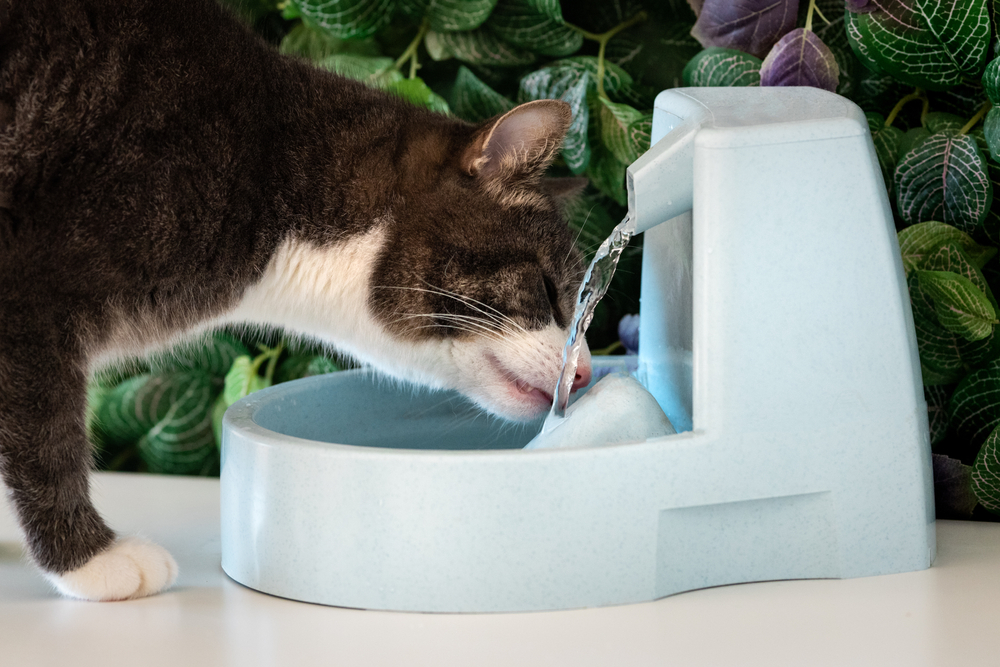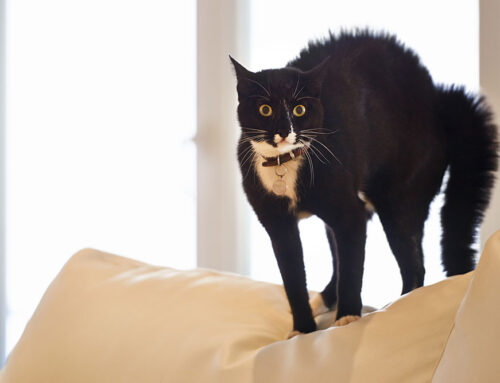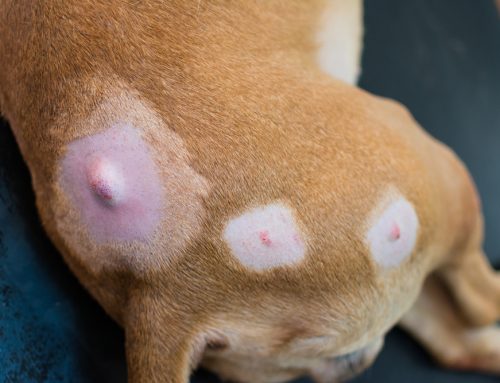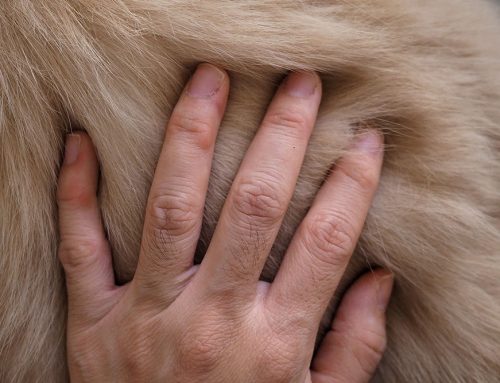Cats are susceptible to numerous urinary disorders, including a life-threatening emergency known as urethral blockage. We explain feline urinary disorder causes, signs, and prevention, and describe when your cat needs veterinary care and treatment at Guam Pet Hospital.
Common cat urinary conditions: Feline lower urinary tract disorder
Feline lower urinary tract disorder (FLUTD) is the collective term for the many conditions that affect a cat’s bladder and urethra (i.e., the narrow passageway that transports urine from the bladder to outside the body). FLUTD disorders include:
- Urinary tract infection (UTI) — UTIs may be bacterial, viral, fungal, or parasitic, and are most frequently diagnosed in older cats.
- Urinary or bladder stones — Urinary stones develop from mineral deposits (i.e., crystals) found in a cat’s urine. While small stones can irritate the bladder lining, large stones can completely block the urethra and make urination painful or impossible.
- Feline idiopathic cystitis (FIC) — FIC is a poorly understood inflammatory bladder condition that affects young cats. Stress and anxiety are considered contributing factors, and cats may experience repeated FIC episodes if treatment is unsuccessful or incomplete.
- Urethral blockage — When a urinary stone, debris, or mucus (i.e., urethral plug) blocks a cat’s urethra, toxins accumulate in the bloodstream because of the trapped urine, causing internal damage, and—if left untreated—rapid death. Urethral blockage can occur in male and female cats, but is more common in males because of their narrow urethra.
Common cat urinary conditions: The risk factors
FLUTD can affect male and female cats at any age, but is most commonly diagnosed in middle-aged cats. Risk factors also include obesity, stress (e.g., other cats’ bullying, sudden routine changes), and a dry food diet. Although an indoor-only lifestyle best protects your cat from harm, cats with no access to the outdoors experience more mental distress, boredom, and anxiety, which means they will more likely suffer from FLUTD.
Common cat urinary conditions: The signs
Learn to identify changes in your cat’s litter box habits and quickly seek veterinary care at Guam Pet Hospital to ensure your cat’s condition doesn’t worsen. Signs, which range from subtle to obvious depending on your cat’s pain level, typically include:
- Straining to urinate — Cats may look constipated, spending a long time in the litter box, and producing only small urine amounts.
- Increased frequency and urgency — Cats may frequently use their litter box, or have accidents on the way to the box.
- Bloody urine — Frequent straining and inflammation may result in red or pink-tinged urine.
- Urinary accidents (i.e., house soiling) — Cats may associate the litter box with pain and discomfort, and instead urinate on smooth, cool surfaces.
- Vocalizing or showing distress — When cats cannot urinate because of a urinary blockage, they may cry, yowl, or appear panicked.
- Little to no urine — If your cat cannot produce urine or produces only a small amount, this is an emergency, and you must contact Guam Pet Hospital immediately.
Common cat urinary conditions: The diagnosis
Cats tend to hide illnesses until signs are severe when, unfortunately, their health can deteriorate rapidly. Any litter box routine or behavior changes by your cat calls for an appointment at our hospital.
Fortunately, diagnosing urinary issues is relatively straightforward, beginning with a full physical examination to assess their overall health, hydration, behavior, and comfort. Next, we’ll perform a urinalysis to measure your cat’s urine concentration and pH, and look for microscopic bacteria, crystals, and abnormal cells. If bladder stones are suspected, X-ray imaging can identify the stone quantity, size, and shape, and help us determine whether surgical removal is necessary.
Common cat urinary conditions: Treatment
Our veterinarian can determine if your cat is blocked based on their at-home behavior and physical examination findings. If a blockage is diagnosed, your pet will need surgery to remove the offending stone and any other mineralized debris.
Blocked cats may be hospitalized after surgery to address any internal imbalances caused by toxin build-up. Once we discharge your cat, we likely will recommend that you encourage fluid intake and switch to a veterinary or wet-food diet to reduce the chances of future blockages.
Common cat urinary conditions: Management

FLUTD management will vary based on your cat’s diagnosis, but may include medication for infection, pain, or inflammation. We may also recommend ways to reduce your pet’s stress, although stress or behavior-related urinary health conditions can take longer to treat, because identifying what is upsetting your cat can be difficult. We may suggest a specific diet to ensure adequate hydration and prevent crystal or stone formation.
Every cat can benefit from a care routine that promotes urinary health. Some easy strategies include:
- Increasing water intake — Hydration promotes urination and flushes the kidneys and bladder. Encourage your cat to drink more water by feeding wet food, using a pet water fountain, and providing multiple water bowls throughout your home.
- Keeping a routine — Cats like things to stay the same. Avoid sudden changes to your cat’s schedule or their environment (e.g., change their food or litter type gradually).
- Decreasing stress — If you have multiple cats, prevent bullying or guarding by ensuring they have plenty of resources (e.g., food, water, beds), and ensure you play, snuggle, or interact with each cat daily—that will lower your stress, too!
- Encourage normal litter box use — Provide a litter box for each cat in your home, plus one additional box. Place each box in a quiet location where your cats will feel comfortable and safe, remove waste daily, and thoroughly clean each box at least weekly.
Cats are sensitive companions who deserve close attention and care. If you notice changes in your cat’s urinary health, don’t delay—schedule an appointment at Guam Pet Hospital immediately.








Leave A Comment